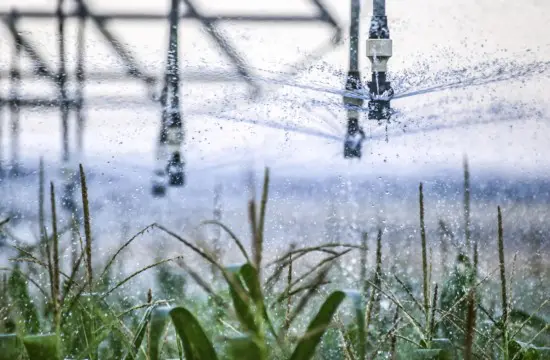The Fertilizer Institute asserts farmers and the fertilizer industry to take the loss of nutrients into the environment very seriously. Farmers continue to implement practices on their farms to further reduce nutrient loss. However, the EPA notes that non-point source pollution – which includes agricultural runoff — is still the leading cause of water pollution in the United States.
Of concern are the nitrate loads that enter streams and rivers and end up in the Gulf of Mexico. Field drainage is associated with an increase in nitrate loads to these waters, which contributes to a low oxygen or hypoxic zone in the gulf. The EPA reports the economic and environmental effects created in the “dead” zone, such as killing aquatic life, create water quality problems.
“It is a real concern for the health of our groundwater, lakes, rivers and atmosphere,” notes The Fertilizer Institute. “Several conservation practices already exist to help prevent erosion of soil, which may contain excess nutrients from ending up somewhere they shouldn’t be. But on top of that, making sure that only the right source and amount of fertilizer is used when and where it’s most needed will further reduce the chances of contamination.”
Farmers can and are addressing this challenge by making adjustments in cropping and drainage systems. The “4R” Best Management Practices – applying the right fertilizer source at the right rate at the right time and in the right place – is an increasing focus of the industry.
Establishing proper drainage also is key, according to University of Minnesota Extension specialists. Surface drainage tends to increase the nutrient loss that occurs with surface runoff. Subsurface drainage can decrease surface runoff and reduce sediment losses by 16 to 65 percent and phosphorus losses by up to 45 percent. But subsurface drainage can still generate some nitrate loss as materials move through drainage systems and end up in nearby surface water.
University of Illinois Extension specialists advocate implementing productivity enhancements with drainage that can be balanced with reducing nitrate loads from conventionally drained row crop-based systems. Research is focusing on ways cropping systems and drainage systems can be managed to improve water quality, while maintaining high productivity and profitability.
Drainage Terms and Definitions
Hypoxic Zone
A water body or area within a water body experiencing low dissolved oxygen concentrations that can potentially harm aquatic life, such as the seasonally formed hypoxic zone in the Gulf of Mexico. Nitrate loadings in the Mississippi River encourage algae growth. Algae eventually die and are decomposed by microbes. During decomposition, microbes use the dissolved oxygen in the water, which reduces dissolved oxygen concentrations and leads to hypoxia.
Watershed
Land where all the water falling on it and draining off it eventually goes to one defined point, such as a river or lake.
Surface Drainage
The practice of removing standing water from the ground surface by land leveling or through the construction of shallow ditches and grassed waterways.
Subsurface Drainage
The practice of removing excess water from below the soil surface through drainage pipes or tubing. Historically, clay tile cylinders were used. Today’s perforated plastic tubing is typically installed just below the root zone, at a depth of 30-48 inches and at a spacing of 30-100 feet.
Controlled Drainage
Use of one or more flow-retarding structures placed in the drainage outlet or along drainage pipes that allows the water level in a field to be artificially set. The term is used interchangeably with “drainage water management,” and is distinct from subirrigation.
Subirrigation
A type of subsurface drainage system designed to allow water to be fed back to the soil through drainage pipes during times when the crop’s water demand is not met by existing soil moisture. These systems require additional pumps and a supplementary water supply.
N + P, Land Use and Edge-of-Field Management
Several states have compiled nutrient loss reduction strategies that can guide farmers with strategies to help further reduce nitrate loads. For example, in Iowa, Iowa State University researchers identified effective nutrient reduction practices and placed them in three categories – nitrogen and phosphorus management, land use and edge-of-field management.
Management practices involve application rate, timing and method, plus cover crops and reduced tillage. Land use practices farmers can consider include use of perennial energy crops, extended rotations, grazed pastures and land retirement. Edge-of-field practices involve drainage water management, wetlands, bioreactors, buffers, terraces and sediment control.
The University of Illinois lists several management practices for consideration as well:
- Improving nitrogen management through use of the 4R practices
- Planting winter cover crops
- Increasing perennials in cropping systems
- Using controlled drainage systems
- Reducing drainage intensity with subsurface drains
- Recycling drainage water through subirrigation
- Use of bioreactors, wetlands, alternative open-ditch designs and saturated buffers
Additional information about all of these management practices, including the pros and cons, implementation and economic considerations, can be found through the links below.

